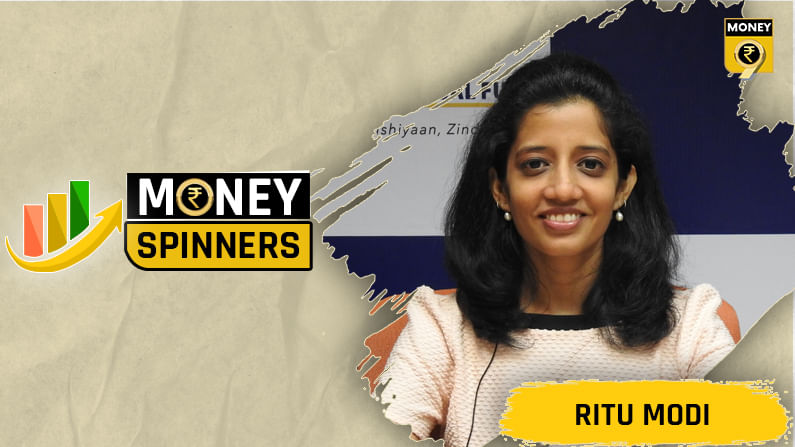Wealth creation made easy by this money manager
Ritu Modi believes the key is to remain invested and take advantage of the power of compounding
- Harsh Chauhan
- Last Updated : August 11, 2021, 13:18 IST

History is full of evidence to show that equities has been the best-performing asset class over a long-term horizon. However, directly participating in equities can be quite a task for novice investors as there are thousands of stocks to choose from. Getting in the wrong stock can lead to wealth destruction. This is where mutual funds especially ETFs (exchange traded funds) that mimic the underlying index, thereby providing investors with the possibility to garner the same returns (in most cases marginally better) as the index over the long term. In an interaction with Money9, Ritu Modi, Fund Manager – Equity Passive Funds LIC MF, discussed how ETFs help in compounding wealth.
Edited excerpts:
Q: As a concept, passive investing isn’t new. But of late, it is gaining traction in India. A study by Winvesta shows that ETFs hold about 13% share in overall asset under management (AUM). The share was just 9% six months ago. What is the primary reason behind this sudden rise?
Modi: While ETFs have been available for almost 2 decades, the trigger for growth came after pension funds started investing in equities through the ETF route since Aug-15. Following which, a lot of fund houses started launching index and ETFs which increased the awareness about the product resulting in increased traction. ETFs and other passive products provide a great way for investors who are looking for simplicity and cost-effectiveness.
Q: In a bull market like the one we are witnessing now, does it make sense to invest in passive funds?
Modi: Investment in equities is always subject to market risk and the short-term returns do get impacted based on when an investor chose to invest. The key to generating returns is to remain invested for a longer term, as there is enough evidence of equities giving higher return over interest rates and as the effect of compounding kicks in, the wealth generation is much higher. In the past few years, from 2009, we have witnessed multiple macros, micro-events like interest rate risk, inflation risk, Brexit, war, GST, demon, etc, but investors who remained invested during these periods must have generated double-digit returns on a CAGR basis. We believe the key is to remain invested and take the advantage of the power of compounding.
Q: What are the advantages of passive funds over active funds?
Modi: Passive products are simple and easy to understand and apt for investors who do not want the complications of identifying and tracking the funds. Passives are somewhat introductory products for investors who want to generate returns from the India growth story through investments in Nifty50 or any other indices. Passive funds also provide an opportunity to invest in a diversified portfolio by replicating the weights and returns of the underlying index thereby reducing risk and volatility.
Q: Globally, passive funds have outperformed active funds in the long run. What is the trend in India?
Modi: Penetration of MFs as an investment tool itself is extremely low in India. Within that passive is even lesser. So we are currently at an extremely nascent stage in India unlike the developed markets like the US where passive accounts for over 40% of the MF AUM. Having said that, the evolution of ETFs in India will be similar to the global markets where it started with index-based ETFs. There are quite a few innovative products like smart-beta ETFs, ETFs tracking global markets, theme-based-ETFs but we believe it will take some time to gain traction in that space.
Q: Returns delivered by passive funds are linear while those of active funds at times can be divergent. What is the primary reason behind it and what is its impact on overall portfolio?
Modi: It is primarily because of the nature of the product. Passive funds are more diversified and not subjected to concentration risk — be in sector or stocks. Thus, the results are linear in nature and not divergent.
Q:What portion of an individual’s investment portfolio should be held in passive funds and why?
Modi: Any investment in the MF depends on the investor’s investment objective and risk-taking ability. However, Passive Funds should be seen as the foundation block of one portfolio as it provides stable returns with lower volatility. An investor who is looking for benchmark-beating returns should certainly look out for other Active Funds. I believe passive and active should be seen as complementing products and not competing products.
Q: How should one go about selecting the right passive fund?
Modi: There are various passive funds tracking various indices/sectoral indices as well as strategy indices. Thus, investors have a variety of products to choose from and should decide which segment of market he/she wishes to invest into. Once decided, the investor may choose any ETF which has a lower tracking error relative to the index.
Download Money9 App for the latest updates on Personal Finance.
Related
- पहली छमाही में रियल एस्टेट में संस्थागत निवेश 37% घटकर तीन अरब डॉलर रहने का अनुमान
- Budget’24: New LTCG rule to hit long-term property owners hard
- Looking to buy gold? Buy now before it’s too late!
- Budget 2024: What is NPS ‘Vatsalya’ scheme? How to apply & other benefits?
- Budget’ 24: Startup ecosystem all smiles with scrapping of angel tax
- Budget’24: New NPS scheme for minors launched, here’s how you can benefit

